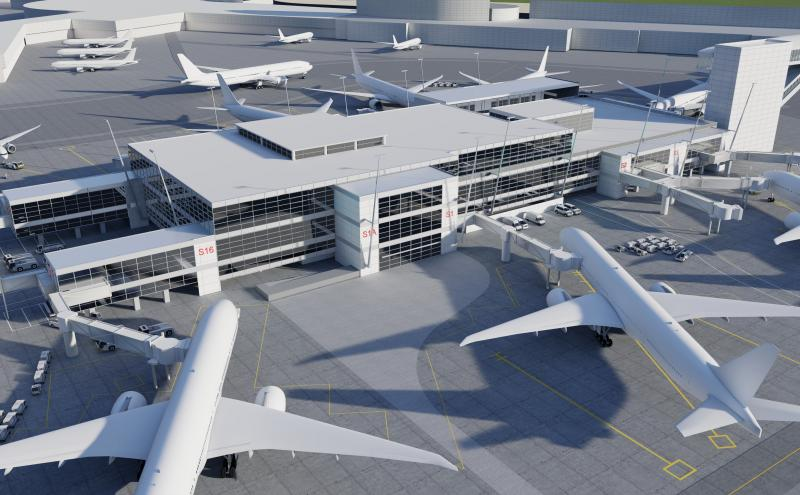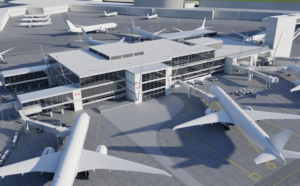Recent changes to federal funding programs are dramatically widening the scope of airport expansion plans throughout the U.S.
In the fall of 2022, the Federal Aviation Administration (FAA) announced the availability of $1 billion during 2023 for airport expansion projects. Over the next several weeks, the FAA will release its list of awardees for this year’s funding cycle. While the funding is earmarked for airport infrastructure projects, the types of projects that qualify are diverse.
If a project is selected, funding will cover up to 80% of the cost for medium and large hub airports. For the remainder of eligible airports—such as small hub, non-hub, and non-primary airports—funding can cover up to 95% of a project’s cost. In either case, the grants come with a four-year obligation period, and the FAA can recover any funding that is not obligated once that time has elapsed.
The $1 billion in annual funding was authorized for a five-year period by the Infrastructure Investment and Jobs Act (IIJA) and the same bill also authorized another $15 billion over five years to fund projects that upgrade safety and expand the capacity of U.S. airports. Finally, another $5 billion is available for projects that repair and upgrade air traffic control facilities.
Added to these already established funding streams, the FAA has another $269 million in leftover funding for airport projects. As 2022 was ending, the agency announced the availability of this supplemental funding for projects. A list of awardees of this funding will be available soon.
Some of the upcoming airport expansion projects are extremely large. One of the busiest airports in the world, Chicago O’Hare International Airport, has announced a $7.1 billion expansion initiative. The plan is to demolish its oldest passenger facility and construct a new terminal. The new O’Hare terminal will become the focal point of airport operations. The expansion plan outlines many components of this initiative, and one that will occur early in the process is the construction of a large tunnel to connect passengers and baggage collection areas to other airport facilities.
A renovation and expansion project at Seattle-Tacoma International Airport carries a projected cost of $1.4 billion. The initiative will also involve the Port of Seattle. Another component of the expansion initiative is the redevelopment of a vacant 200,000-square-foot facility at the airport into a passenger-focused destination. The renovated facility will offer retail options, four new gate pods, more efficient circulation and premium lounge spaces. Additionally, the port authority also plans to carry out a $300 million third phase of improvements to the airport’s baggage system. Solicitation documents will be available to interested parties by spring of 2023.
Another very large project has been announced for the Sacramento International Airport in California. A cumulative cost of $1.3 billion is projected for the various phases of this initiative. Six improvement projects will expand airport facilities and consolidate a wider array of passenger services. The plan will be carried out through several phases of construction from 2024 to 2027 and will ultimately deliver a new pedestrian walkway to improve terminal-concourse connectivity, an expanded airport tram, an enlarged Concourse B, new parking options for Terminal B, a consolidated ground transportation center and an expanded Terminal A. This effort will be the largest infrastructure/expansion effort in the history of the airport.
The T.F. Green Airport in Warwick, R.I., will be the site of extensive construction work in the immediate future and officials there have $106 million to spend. An implementation plan has been released and it features several large projects that will dramatically expand airport capacity and operations. One of the plan’s components in the initial phase involves construction of a new cargo terminal which is projected to cost more than $100 million. The new facility will replace an 80-year-old hangar. Design work on the project is ongoing and construction is scheduled for 2024.
The 80-year-old Santa Fe Airport is also scheduled for renovation projects. Planning officials will seek professional architect/engineering services for design work on a broad sweep of airport improvement projects. Officials have developed a tentative list of projects that involve adding new parking options, expanding capacity for multiple airlines, enlarging baggage claim areas and creating new passenger waiting areas. No cost projections are yet available.
A $300 million project at the McKinney National Airport expansion in Texas has been announced. City leaders say that a new terminal is a critical need, and the anticipated cost of that facility for the city will be approximately $200 million. The new terminal will be designed to accommodate commercial airlines and bring long-awaited passenger services to the airport. Additional components of the new terminal concept include 2,000 new parking spaces, dining and retail areas and other amenities to improve passenger experiences. City planning officials originally identified and began planning for this expansion at the airport as long ago as 2012 and there appears to be strong support for the project.
A major overhaul of the Des Moines International Airport in Iowa is proceeding through the early stages of development. The expansion initiative will be carried out in phases and early cost projections estimate that the cumulative total will be approximately $770 million. Components of the plan’s initial phase include the addition of 245,000 square feet of terminal space, delivery of a 13,000-square-foot central energy plant, construction of a 7,000-square-foot office building and a new skyway bridge to connect all facilities. Additionally, one of the airport’s principal concourses will be extended to support up to 11 new gates.
Similar examples of upcoming opportunities are being released weekly. America’s airport infrastructure is being overhauled and the activity is anticipated to reach full force in 2023.








